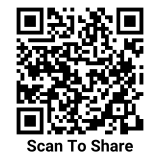
are the aims of this leaflet?
This leaflet has been written to help you understand more about erythema nodosum. It tells you what it is, what causes it, what can be done about it, and where you can find out more about it.
What is erythema nodosum?
Erythema nodosum (EN) is a skin condition that is characterised by painful red, round lumps which typically appear on the shins and around the ankles, and less commonly the thighs and forearms. It can occur at any age, in both sexes, and in anyone. These lumps tend to heal to leave a bruise-like appearance. It usually goes away by itself, and rarely may recur, but it can be a sign of something more serious. EN is more common among females and is more frequently observed between the ages of 25 and 40 years (1,2). In England the rate is about 2.4 cases per 10000 per year.
What causes erythema nodosum?
In most patients, no cause or trigger can be identified. In some patients, a trigger can be identified. EN may sometimes be a sign of an underlying condition that needs to be identified or can be due to certain medications.
What are the common causes of erythema nodosum?
The commonest causes of EN are:
- Throat infection caused by bacteria called Streptococci (most commonly in children) or a chest infection caused by Mycoplasma Pneumoniae.
- Sarcoidosis: This is a rare inflammatory disease which can affect any organ in the body, but most commonly involves the lungs, lymph glands and skin. Sarcoidosis is one of the more common triggers for EN in adults
- Tuberculosis
- Bacteria that usually cause stomach pain and diarrhoea such as Salmonella, Campylobacter or Yersinia
- Inflammatory bowel disease: patients with both ulcerative colitis and Crohn's disease may infrequently develop EN.
- Pregnancy an occasionally trigger EN.
- Medications that are known triggers for EN include the contraceptive pill, gold, sulphonamides and some antibiotics.
Is erythema nodosum hereditary?
No.
What are the symptoms of erythema nodosum?
Patients with EN may feel generally unwell with a temperature shortly before or at the same time as the lumps start to appear. There may also be aching and swelling of the joints, mainly knees, ankles and wrists. Aching of the legs and swelling of the ankles may last for several weeks after the lumps have appeared.
What does erythema nodosum look like?
EN starts as poorly defined red painful lumps. They feel like firm, smooth, raised lumps, 2 to 6 cm in diameter on the skin and are often very tender. They most typically appear on the shins and around the ankles, however less commonly on the arms, thigh and neck. As the lump begins to fade, it looks more like a bruise. The lumps usually clear over a period of 3–6 weeks without scarring.
How is erythema nodosum diagnosed?
The diagnosis is usually made by the doctor recognising the rounded lumps on the skin on the typical sites. If there is any doubt, a skin biopsy may be performed to confirm the diagnosis. This involves the removal of a small sample of skin under local anesthetic by the doctor in the hospital. This sample is then processed by the laboratory and then examined under the microscope. Additional investigations, usually blood tests, stool sample and a chest x-ray, may be required to determine the underlying cause of EN.
Can erythema nodosum be cured?
Most patients with EN make a full recovery within a few weeks or months. Relapses may occur in approximately one third of cases with the condition persisting and becoming a chronic disorder lasting for 6 months or even years.
How is erythema nodosum treated?
Your doctor will look for known triggers for EN and treat the underlying cause. If an infectious cause is identified, then antibiotic treatment may be given. If a particular medication is suspected as the trigger, it may be stopped. For most people with EN the rounded lumps tend to heal spontaneously within 3 to 8 weeks. Some patients may need treatment to relieve symptoms, such as bed-rest, leg elevation, and anti-inflammatory painkillers (non-steroidal anti-inflammatory agents). For more prolonged or frequently occurring EN, a number of other treatments may be used such as steroid tablets.
Self-care (What can I do?)
There is not a great deal you can do to influence the course of EN other than elevating the legs when resting, and avoiding too much time standing, walking and running. You could try ibuprofen or apply a cool wet compress, like a damp cloth.
Where can I get more information about erythema nodosum?
Web links to detailed leaflets:
http://www.dermnetnz.org/topics/erythema-nodosum/
https://www.nhs.uk/conditions/erythema-nodosum/
Jargon Buster: https://www.skinhealthinfo.org.uk/support-resources/jargon-buster/
Please note that the BAD provides web links to additional resources to help people access a range of information about their treatment or skin condition. The views expressed in these external resources may not be shared by the BAD or its members. The BAD has no control of and does not endorse the content of external links.
This leaflet aims to provide accurate information about the subject and is a consensus of the views held by representatives of the British Association of Dermatologists: individual patient circumstances may differ, which might alter both the advice and course of therapy given to you by your doctor.
This leaflet has been assessed for readability by the British Association of Dermatologists’ Patient Information Lay Review Panel
BRITISH ASSOCIATION OF DERMATOLOGISTS PATIENT INFORMATION LEAFLET
PRODUCED MAY 2017, APRIL 2021
NEXT REVIEW DATE APRIL 2024
Download a PDF of this page using the link below:
Download File